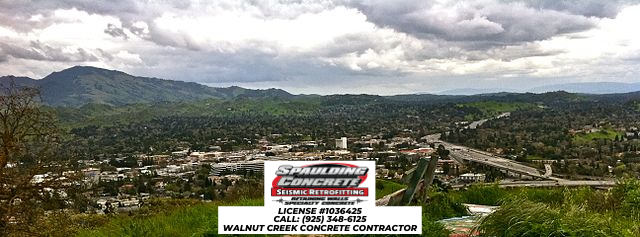History of Lafayette, California
The Town
Until World War II, Lafayette continued to act as a shopping center for nearby farmers and the young people who began to enjoy the country life just above the hills from the Oakland and San Francisco bustle. Roads were strengthened, land development increased and the stage set for the booming post-war migration that would create one of Contra Costa County’s most successful suburban towns.
Before 1915 a cornfield developed just below Mt. Diablo Boulevard along Moraga Lane, the La Fiesta Shopping Center site today.
In 1910 “downtown” Lafayette surrounded the triangle of land granted to the people on November 19, 1864 by the town’s founder, Elam Brown, as a public plaza. The Geils Building, the Pioneer Store, Lafayette Meat Market, Lafayette Hotel and the blacksmith shop of Peter Thomson are all situated around the Plaza from the left.
About 1928 Robert Elam McNeil and his family members were photographed inside his Pioneer Shop. In 1902, McNeil purchased the market from Milton, son of Benjamin Shreve, and changed the name to Pioneer Market in the ’20’s. The building at 3535 Plaza Way is visible today.
The Starks’ Lafayette Meat Market relocated to the southeast corner of Mt. Diablo Boulevard and Hough Avenue in 1920 from Moraga Road across from the Plaza. The original building was demolished in 1935, and replaced by this unique store. The structure was remodeled in 1949 and now operates as a commercial building. This picture from 1936 shows that local life was moving at an easier rate, and auto traffic was light enough to encourage cars to park “on the wrong side of the road.”
The Hardware store of Clarence Brown, situated on the northeast corner of Mt. Diablo Boulevard and Oak Hill Lane, was representative of the “Main Street” architecture of the 1930’s. Brown is seen in front of the shop, and his wife, Freda.
The most unique business building in Lafayette is the towered brick Garrett Building, located at 3565 Mt. Diablo Boulevard. In 1937, one of the town’s early realtors, Col. N. M. Garrett, designed the structure and unsuccessfully attempted to encourage a similar style of design for other buildings. He went so far as to buy the brick and gave it as a gift for the next door to be set up in the new Post Office. The gesture was declined.
In 1925 Pat Medau’s ice cream parlor, located in the old Way Side Inn at 3521 Golden Gate Way, was a popular spot for local youngsters. Medau’s wife, Lizzie, poses behind the counter.
Oil! Was the cry in 1901, when the Berkeley Crude Oil Company offered 300,000 stock shares to explore the Flood Ranch on Upper Happy Valley Road for “black gold.” Another company, the Central California Oil Company, again offered shares in a similar operation on the Flood Ranch in 1921. The prospectus described the land as “near Lafayette, 13 miles from Oakland.” Despite the sparkling promises, no “bonanza” was ever published.
As the “outside” world began to discover central Contra Costa County, ads for “country estates” began to appear. This page from a 1913 brochure is labeled “View of Mt. Diablo from the New Townsite of Lafayette.”

Image courtesy of Jeffreymendel Jeffrey Nash – Own work, CC BY 3.0, https://commons.wikimedia.org/w/index.php?curid=50308966
This interesting city has the following must-see sights in Lafayette, California:
- Lafayette BART Station
- Cross of Lafayette Memorial
- Lafayette Park Theater
- La Fiesta Shopping Center
- Lafayette Reservoir
- Grizzly Peak
- Sibley Volcanic Regional Preserve
- Lafayette Community Park
- The Clocktower Lafayette
All of these landmarks are located just a short distance from our location in downtown Walnut Creek, Spaulding Concrete on Locust Street!
